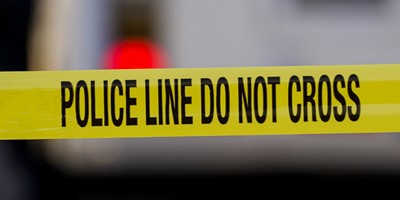When an Iowa-Minnesota tactical team conducted a simulated school shooter incident at an Iowa elementary school, it took seven and a half minutes to find the shooter using traditional tools. But when a second group of first responders used a proprietary digital twin imaging technology “map” of the school grounds, they found the shooter in just 31 seconds – 15 times faster.
Meet Dr. Maria Bell, a South Dakota-based surgeon who has used digital twin imaging technology in performing over 5,000 robotic surgeries. She started Digital Twin Imaging (DTI) a little over a year ago, with a goal to find new medical applications for the Da Vinci Robot she has long used in operating rooms to save women’s lives and health.
The Uvalde school shooting, however, led her to refocus her energies (in addition to her full-time medical practice and various hobbies) on deploying 3D imaging technology to assist first responders in gaining full access to public buildings, starting with public schools (for which federal grant money is available).
She invested in the LiDAR [Light Detection and Ranging) scanning technology, used by NASA for space missions (and in the iPhone 12 Pro series) to build 3D maps. These scanners enable a perception of depth that is quite like that of the human eye. Bell thought, if real estate firms can use this technology for selling homes, imagine what we can do to map out schools and other public buildings for use in crises that require prompt, decisive action.
Bell convinced Dickinson County (IA) Sheriff Greg Baloun to let DTI map out one school building and train local emergency management staff, teachers, and even students in how to use the technology. It took 22 hours of work to scan the entire school building and grounds, and another 10 to 12 hours of editing and adding information to complete the school map.
The result is a user-friendly map that shows every wall, floor, window, fire extinguisher, electric outlet, video surveillance camera, and large structure, from the rooftop to the ground, the parking lots, and other structures on school property. An interactive compass (other proprietary tech) and a pen can show first responders key areas (like individual classrooms). As the technology evolves, DTI endeavors to add new features to the system.
Recommended
Dickinson County then mandated training on how to use this mapping technology for all of its first responders, and DTI has continued to map more schools – and the Dickinson County courthouse. As a bonus, the company is teaching faculty and students (who get a small scholarship and a certificate for their help) in the scanning process. DTI also created a nonprofit to funnel grant monies and donations into the scholarship program.
DTI has all of its mapped facilities stored in the cloud and available at a moment’s notice for all first responders at the outset of a school emergency (whether an intruder, a fire, or any other incident). Sheriff’s deputy Bruce Lee organized the tactical team experiment that involved only first responders with no local training or prior access to the school maps.
Dr. Bell, a South Dakota native, was one of the first surgeons to pioneer robotic hysterectomy surgery and instruction worldwide. Her expertise in the medical field includes gynecology, gynecologic oncology, hospice and palliative care, robotic surgeries, telemedicine, and community and population health with a focus on serving Native American people groups. She is also a private pilot who co-built an RV-14 experimental aircraft.
Bell parlayed her small-town upbringing into a medical degree from the University of South Dakota [USD] to a master’s in public health from The Johns Hopkins University to an MBA in health sector management from Duke University’s Fuqua School of Business. She served in Louisiana, Alabama, and Colorado before returning “home” to become Chief Medical Officer, Sanford Research, at USD.
She admits to running DTI at night after full days in her “real job.”
Bell says she has devoted her career (in addition to patient care) to driving innovation in healthcare technology and contributing to the field through clinical research, analysis, publication, academic instruction, and healthcare leadership. It is this drive, combined with a passion for forward-thinking solutions and emerging technologies, that enabled her to create this valuable new use for digital twin imaging technology that has great potential for saving the lives of children and school employees – and first responders as well.
According to Elliott Barnes, who heads up tech services for DTI, the modeling includes a sky view that provides an overhead image of the entire school property along with a 2D floor plan placed on top of the roof that enables first responders to set up a command post at a safe distance from impacted buildings (especially valuable in case of fire). This mapping enables responders to prioritize specific areas; for example, clearing spaces below heavy rooftop HVAC units that might collapse during a fire.
Barnes says the company’s technology shows promise for safety management at industrial facilities and large factories with hazards even more difficult to navigate without proper mapping. But for the moment, the focus is on schools. . South Lake Middle and High School principal Greg Hiemstra has given the DTI technology high praise.
And Dr. Bell? The small-towner with big ideas smiles as she recounts the serendipity that enabled her small team to achieve big results so quickly.
“Our story is a cool one,” she muses. “It shows the great value of rural America to create and demonstrate a technology that can be applied anywhere in far more uses than we even realize today. As we continue to tweak this tech, it is only going to get better.”
Duggan Flanakin is Director of Policy Research with the Committee For A Constructive Tomorrow who writes about a multitude of issues, innovations, and ideas.

























Join the conversation as a VIP Member